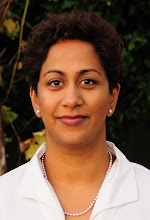Sunday, March 19, 2006
"Crash Moments"
This phrase adopted from the Oscar winner for Best Picture “Crash” is being used regularly to describe racial and cultural misunderstandings, discriminatory behavior and random occurrences. There has been a lot of news coverage as to whether the movie “Crash” deserved the award. If the movie were to comment about this, it would say “decide for yourself!”
Unlike other movies dealing with issues of race, sex, culture and violence, this is one movie that does not judge. Rather, it cleverly uses common stereotypes that people have and shows us their biases in an unflattering, yet ironic light. The movie left me disturbed with its realistic portrayal of common incidents which blow up into magnified issues. While it didn’t show any scenes regarding Indians, I kept thinking about what was left unsaid. To me, it seems to be just a matter of time before the clash of cultures involves Indians more and more in the United States.
Indians in the United States have become more prominent in the recent years. More and more Indian/South Asian faces appear in all fields of life – in television advertising, in the news media, in sciences (of course!), and in expected roles – cab drivers in New York City and motel owners across America. Added to that is the increase in media coverage centered on President Bush’s visit to India, combined with the fact that most Indians in the U.S. are shown as smart, successful, professionals.
The animosity is already there. Just look at the experiences of call-center workers in India. Among other things, they complain of verbal abuse from Americans, anxious about the jobs that Indians are supposedly stealing from them; they make fun of their accent and ridicule them about India. Isn’t it just a matter of time before their base fears spill over from call center workers to Indians that they see and interact with in their daily lives? How many people remember the incident of the Philadelphia radio show host who called an Indian call center pretending to order something for his daughter? During a live broadcast, the host proceeded to abuse the unsuspecting customer service representative and made several derogatory comments about Indians being “rat-eaters,” etc.
I remember getting a call the other day where I knew the caller was from India, from his accent. I politely refused his offer and asked him where he was from. They probably get that a lot these days from Americans. He responded with a question, asking if I was Indian, to which I said yes. He then told me he was from Pakistan. I laughed after I hung up. Obviously this call center worker had a list of responses to a question like mine. I wonder what he would have said if an American responder at the other end of the line had asked him that…
Some people would argue that this is a common stereotype from Americans who live in rural America, where they are not exposed to cultural melting pots like New York City or other urban centers like San Francisco or the Bay Area. That is probably true. Most Indians tend to migrate to cities where other Indians live, where the Indian community is strong, where Indian stores and temples exist, so an average American living in these cities would probably interact more with Indians than someone living in rural America. But the sheer force of our numbers in the world – what is it – that one in every five or six is an Indian, prompts concerns about the increasing occurrences of “Crash moments” related to Indians.
The reverse is also true. Whether it is our penchant for fair skin or our caste based values, Indians tend to be discriminatory both within their own community and outside. I’ve heard racist comments from wealthy Indians in the United States – the feeling of “ours” vs. “theirs,” with “theirs” referring to Americans is omnipresent in the usage of an average Indian family in the US. Rarely have I seen such instances spill out in public, but in gatherings among friends and community members, many will agree that we discriminate against African-Americans, Caucasians, Hispanics, Other Asian communities and among ourselves based on caste and language!
As Indians grow and flourish in the United States with multiple generations settling here, our problems spill over as well. Problems with gangs, domestic violence, substance abuse and illegal sales are among the many issues that law enforcement in the United States has to deal with. In those instances, stereotypes on both sides are either reinforced or dispelled.
I remember reading an article in the New York Times last year about cultural differences affecting a drug sting operation. The article talked about the cultural difficulty faced by law enforcement and Indian store owners related to the sale of items used to make an illegal drug “methamphetamine.” Apparently the store owners are prohibited from selling more than a few items of restricted substances to customers that are commonly used to make this drug. The store owners, apparently unaware of the use of these ingredients and limited in their understanding and use of English, were taken aback at the accusation of being involved in illegal drug sales. One example the article mentioned is the word “cook,” which to these store-owners meant “cooking food,” but the street term for “doing a cook” meant making the drug.
The innocence or culpability of these store owners is beyond the scope of this column, but the seriousness of the cultural differences is not. Whether the increased visibility of Indians in the U.S. will serve to create a greater understanding of the complexities and realities of Indian culture or whether it will limit people’s understanding to stereotypes remain to be seen. In the meantime, “Crash moments” continue…
